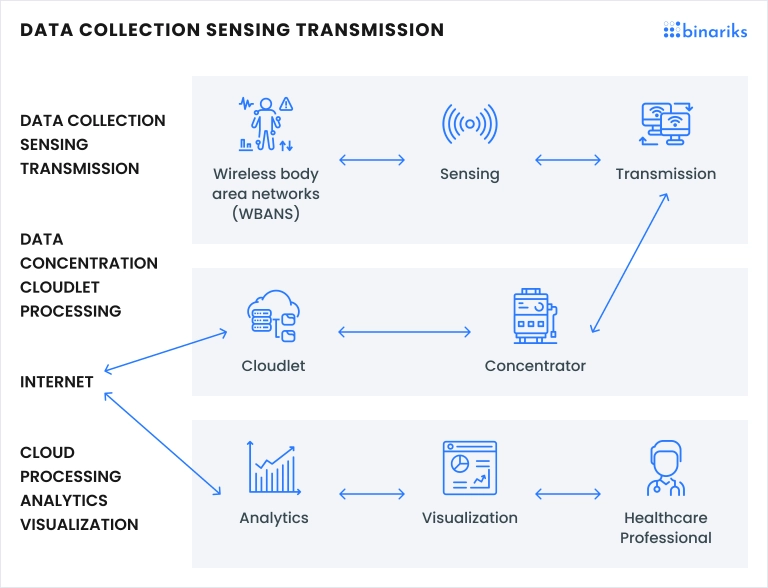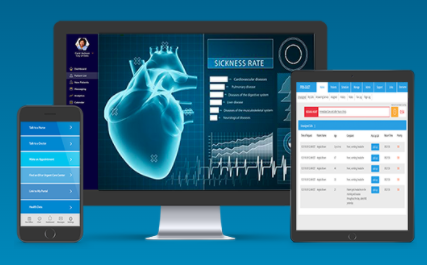Leading Remote Patient Monitoring Platform: Streamline Healthcare Procedures
Leading Remote Patient Monitoring Platform: Streamline Healthcare Procedures
Blog Article
The Future of Health Care: Remote Patient Keeping Track Of Simplified
As health care proceeds to evolve, one location that holds tremendous promise is remote client surveillance. With an emphasis on enhancing person end results and streamlining health care delivery, remote surveillance is poised to revolutionize the sector.
Advantages of Remote Person Surveillance
Remote patient surveillance offers a plethora of benefits for both healthcare suppliers and individuals alike. One considerable advantage is the ability to continually keep track of individuals' vital indications and health information from another location. This real-time monitoring allows medical care suppliers to spot any kind of worrying adjustments or fads immediately, resulting in very early interventions and potentially avoiding clinical emergencies. In addition, remote individual surveillance boosts the general quality of treatment by providing a more all natural and detailed sight of individuals' wellness status past typical in-person gos to.
Additionally, remote individual tracking can bring about enhanced client outcomes and contentment. Individuals can take pleasure in the benefit of getting care in the convenience of their very own homes while still knowing that their health is being closely monitored. This can result in enhanced individual involvement and adherence to therapy strategies, eventually leading to much better health and wellness results. Moreover, remote monitoring can reduce the demand for regular health center gos to, lowering health care costs for both people and service providers. Overall, the advantages of remote person monitoring are clear, making it a useful tool in contemporary healthcare shipment.
Innovation Driving Remote Surveillance
In the realm of modern healthcare, technical developments play a critical role in driving the evolution and efficiency of remote person surveillance. The combination of ingenious technologies such as wearable gadgets, mobile applications, and cloud-based platforms has changed the method doctor from another location check and take care of patient health and wellness - best remote patient monitoring software. These innovations enable continual real-time monitoring of vital signs, drug adherence, and various other crucial wellness data, enabling prompt interventions and customized care strategies
One secret innovation driving remote monitoring is the Web of Things (IoT), which enables smooth connectivity in between clinical gadgets and medical care systems. IoT devices such as smartwatches and wireless sensors collect and transfer patient information to centralized platforms, facilitating remote tracking from anywhere in the world. Expert system (AI) and equipment learning algorithms further boost remote monitoring by examining huge quantities of client information to find patterns, predict health trends, and sharp doctor to possible problems.
Effect On Health Care Distribution
With the assimilation of innovative innovations driving remote individual surveillance, the effect on health care distribution is becoming significantly extensive and transformative. Remote client surveillance allows doctor to use more individualized and proactive like people, causing boosted wellness outcomes and decreased health center admissions. why not try these out By remotely tracking important indicators, signs, and medicine adherence, healthcare professionals can intervene early, protecting against complications and improving the general quality of care.
Furthermore, remote surveillance improves access to healthcare solutions, specifically for people in rural or underserved locations. Clients can obtain continual tracking and assistance from their homes, eliminating the demand for frequent in-person sees. This not only conserves time and decreases prices for both patients and medical care centers however also explanation reduces the risk of exposure to infectious conditions, a crucial factor to consider in the present health care landscape.
In addition, remote individual monitoring allows medical care carriers to much better assign resources and prioritize care based on real-time data. By determining risky patients and intervening promptly, medical care shipment ends up being much more efficient and effective, eventually leading to an extra sustainable and patient-centered healthcare system.
Improving Individual Results

In addition, RPM enables aggressive management of chronic conditions, decreasing the probability of severe exacerbations and health center readmissions. Patients gain from increased ease and convenience, as they can receive treatment in their own homes while remaining connected to their doctor. This continual surveillance not just boosts individual satisfaction yet also fosters a sense of empowerment and involvement in their very own wellness administration.
Future Trends in Remote Monitoring
Welcoming sophisticated technologies in remote patient surveillance is forming the future landscape of health care delivery. One significant trend is the raised usage of wearable devices and sensors moved here to collect real-time data, enabling medical care carriers to keep track of individuals continually without the requirement for frequent in-person gos to.

In addition, telehealth platforms are coming to be a lot more advanced, permitting virtual appointments, remote medical diagnosis, and remote individual monitoring done in one integrated system (best remote patient monitoring software). This holistic approach to remote surveillance is simplifying medical care delivery, boosting person complete satisfaction, and eventually, boosting total top quality of treatment
Final Thought
In conclusion, remote patient surveillance provides countless benefits in healthcare distribution, driven by innovations in technology. It has the possible to boost patient outcomes and revolutionize the way health care is provided. Future fads in remote tracking will proceed to shape the landscape of health care, offering opportunities for even more customized and reliable client care.
Remote client surveillance offers a wide variety of advantages for both healthcare carriers and people alike. In addition, remote person tracking enhances the overall top quality of care by supplying an extra alternative and extensive view of people' wellness standing beyond conventional in-person check outs.
Furthermore, remote client monitoring can lead to better person results and complete satisfaction. Remote person monitoring permits healthcare companies to supply more customized and aggressive treatment to clients, leading to enhanced wellness end results and minimized hospital admissions. Remote patient surveillance (RPM) plays a significant role in improving person outcomes by supplying continual, real-time data that makes it possible for healthcare service providers to step in quickly and change treatment plans as needed.
Report this page